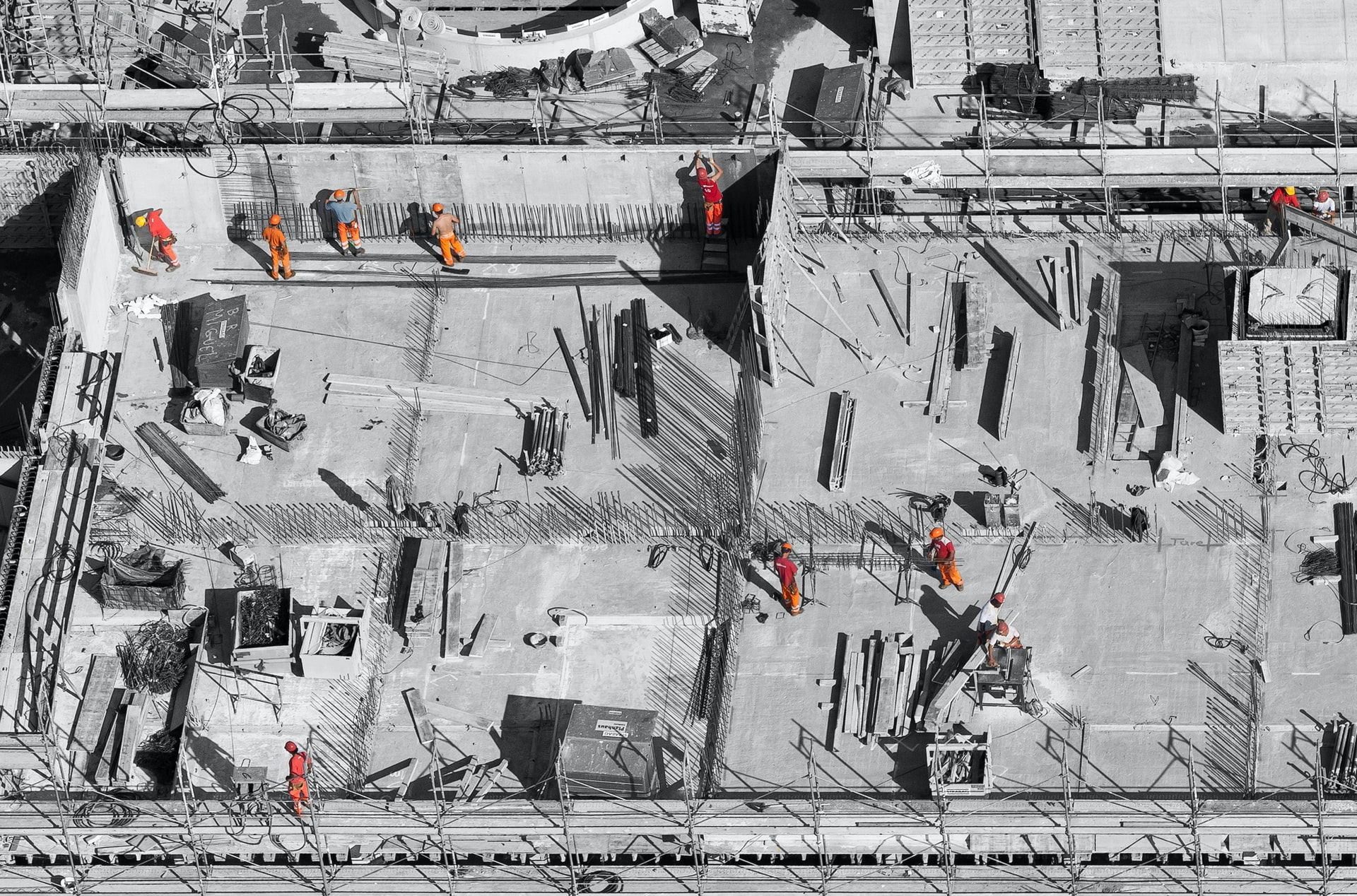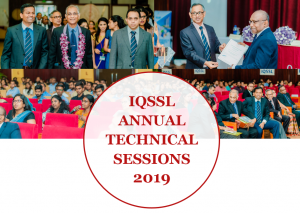K.C.W. Liyanage and A.R. Rupasinghe
KCW Liyanage
Student, Department of Quantity Surveying, Kotelawala Defence University, Sri Lanka
Dr AR Rupasinghe
Senior Lecturer, Faculty of Built Environment and Spatial Sciences, Kotelawala Defence University, Sri Lanka
Abstract
Value Engineering (VE) is a trending concept which is currently being used to get the maximum utility of resources and obtaining Best Value for Money (VFM) in the construction industry. The construction industry is an unpredictable industry where numerous unexpected changes and situations occur during all the stages of Design, Construction, and Operational. Therefore, implementation of VE concept where the unnecessary costs are eliminated and encourage for an effective and efficient Construction. This paper discusses the main requirement of assisting to adaptation of VE technology and other modern technologies in Construction industry compared to foreign industry that affects to the investment of the Employer as the main objective of this qualitative research study conducted through expert interviews.
Keywords: Cost Elimination; Value Engineering; Value for Money.
- Introduction
Economy of both developed and developing countries can be defined along with the contribution of the country’s economy to the construction industry (Moavenzadeh, 1978). During the past decade of time, in Sri Lanka (SL) the construction sector has served the economy with the thriving development and leads as the 4th largest sector with 6-7% contribution to GDP (Jayalath & Gunawardhana, 2017).
Among the Time, Cost, Quality factors the Quality can be defined as the compliance of the Employer’s expectations or specifications where the concept of Value for Money preserves the Quality of the product while be within the limits of time and cost margin. Providing value for money (Jha & Iyer, 2006), while identifying the initiatives, would cause an extra cost elimination as mentioned by (Perera, et al., 2003) where the Cost factor is controlled accordingly.
Therefore, Value Engineering strategies are used as remedial tools that can improve and maintain the quality factor while reducing the expenditure in construction projects. (Ilayaraja & Eqyaabal, 2015). The identification of the necessary unnecessary items in the projects or finding alternative options to achieve quality outcome with lower cost investment is done with the use of these strategies. (Annappa & Panditrao, 2012). Techniques such as Value Management, Value Analysis, Value Engineering could provide the best Value for Money without compromising the cost factor in the Construction Industry. The Influence of the Value Engineering approach which is done at the Concept design stage of the project timeline, on the Quality factor that is considered as one of the main constraints in a construction project.
Currently Value Engineering (VE) is considered as a current requirement and a tool of construction management that can help companies to improve their procedures, services and final product regarding the client’s needs as an end user, with respect to time, cost and quality (Ahmed & Pandey, 2013). This strategy is used to improve the Value without reducing the level of functional quality while eliminating the unnecessary costs embedded in the concept design stage.
The problem arrives mostly with the dissatisfaction of the clients with the final outcome of the project. Sole intention of clients is to obtain a final product orientated by VM towards providing the best possible manner. This process should ensure that providing optimum Value for Money while the functions and needs can be fulfilled at the most favorable cost.
Moreover, according to (Wilegoda, 2009) even though previous researchers have revealed that absence of a proper VE procedure is one of the main constraints for an effective VE practice in the Sri Lankan construction industry, the proper procedures are not in the current practice.
Therefore, even with the most satisfactory cost, it is necessary to have the expected quality level and the extent which the cost or the expenses can be reduced while preserving the quality factor. The Low quality of projects could be ensued as a result of the elimination of costs through VE and this problem is to be analyzed and discussed via this research.
The main objective of this research paper is to pertain Sri Lankan VE practices against foreign countries while identifying timely remedies to provide best Value for Money.
- Literature Review
The origination of Value Engineering was with the attribution of Lawrence Miles, an Electric Engineer of General Electric Company (GEC) in the USA during Second World War. This concept was originally applied in a manufacturing and production process in materials and other resources shortage due to war effects. With the requisite, alternative materials and substitutions were used to improve the qualitative performance while reducing the expected cost. (Ashworth & Perera, 2015)
Thereafter, value methodology was used as an important technique to improve the value of projects which spread worldwide. Along with the attraction and attention drawn by the construction industry professionals, the society name was updated as “SAVE International” in 1996. (SAVE, 2007)
The concept of Value Engineering in UK arose in late 1980s and the RICS published a report named “Value Engineering and Quantity Surveying Practice” in 1987 which was another imperative incident in VE.
Value Engineering is a function oriented, intensive problem solving technique which is also a management tool to improve the functional requirement in a cost effective manner in construction projects. (Arivazhagan, et al., 2017). Intention of VE is to accomplish the objectives and targets of the project team while eliminating the unnecessary costs from the conceptual stage to project operational stage. (Ravish & Vinoth, 2016)
Generally, Value can be defined in a simple equation (Ravish & Vinoth, 2016);
Value = Function / Cost (Eq1: Definition of Values)
Simply the goal of VE is to achieve the excellence of the design while getting the optimum value for money spent. The VE should be done by a team appointed at the initial stage of the project generally including a designer or Architect, Structural Engineer, Quantity Surveyor, planner and members to apply VE through innovative approaches to the concept of the project (Department of Defence USA, 2011)
To proceed VE, the scope of the project should be aware by the VE team. Under the scope requirement of the Employer, the Structural Engineer’s and Architect’s designs, Consultants requirements should be clearly identified by the VE team (HDR Engineering, , 2013).
With reference to the past researches all over the world, the concept of Value Engineering is identified as a management technique to uplift quality and value of the final outcome. (Oke & Aigbavboa, 2017).
The past researchers have identified some issues regarding the implementation of Value Engineering practices to the Construction industry.
Lack of knowledge / awareness and wrong practices – Even though the concept of VE was introduced during early 1940s, the construction professional’s knowledge regarding the practical application is considerably low. The wrong practices by the professionals in the industry instead of proper VE techniques and using ad-hoc methods which do not maintain the expected quality, consumes time in construction projects. (Ronald & Wijono, 2017) & (Fernando, 2018).
Lack of Senior Management support – In order to overcome the obstacles on implementation of VE, the support of consultant’s services and engagement are lacking compared to the other countries. Senior Management’s encouragement and involvement directly involves the VE implementation in Sri Lanka (Ahmed & Pandey, 2013)
Procurement strategies – The research papers of (Baker , et al., 2013), (kelly, et al., 2004) explains that the application of Value Engineering is more successive at the conceptual stage (Early design phase). The application of VE is omitted, unless the chosen procurement path is Design and Build which is another issue identified in VE adaptation. (Perera, et al., 2003)
No predefined way to apply VE techniques – The VE application in Sri Lankan construction Industry is done randomly and only with the requirement or the interests of the Employer. (Karunasena & Gamage, 2017)
Quality – The improvement of quality of the final outcome is the main intention of Value Engineering (Ahmed & Pandey, 2013). Even though, most of the Clients in Sri Lanka are considerate and pays their attention only for low budget within lower time duration (Wilegoda, 2009).
Short time scales – With the construction boom that occurred in 2004 after the Tsunami disaster, the requirement of the buildings was hassled, and therefore larger and more complex buildings were required to be constructed with shorter programs. With the limitation of time, the Stakeholders’ intention on applying VE is diminished (Wilegoda, 2009).
Risk – Another identified issue on application of VE is the Risk factor that occurs along with the VE proposals of the Contractors. In order to develop the project quality, the stakeholders should have the capability of accepting the risk. (Karunasena & Gamage, 2017)
Stakeholder involvement – the Life Cycle Cost of Construction project is an important feature of a project and despite of the Employer, the other Stakeholders do not consider about the LCC after as their accountabilities limits until the end of the DLP (Wilegoda, 2009). Furthermore, the misunderstanding of stakeholders, that the Employer obtains the highest benefits led for the reluctance on practicing VE.
Lack of contractual Involvement by authorities – (Wilegoda, 2009) identified that the unavailability of proper standard procedure for VM/VE process in Sri Lanka and compared to other countries, the government involvement to implement this system to construction is low.
Even though there are several Value Engineering / Value Management studies which are conducted in both foreign and local environment, there is less encouragement to implement Vein to construction projects and that is identified as a gap. The past researchers have addressed the issues to be faced on not implementing VE, advantages of VE, etc. and still the constructional professionals are not very interested in VE. The main constraints are lack of awareness, lack of a proper guideline or strategic system, low involvement of government and authorities, reluctance due to risk were identified as the gaps which are ascertained to cover in order to implement VE in Sri Lanka.
- Methodology
This research study is basically focused through Qualitative Analysis including with Structured and Semi structured Interviews. The interviews were conducted from a Purposive Sampling with the population of Construction professionals in Sri Lanka with an experience of more than five years. The selected sample of interviewees are 10 experts from the fields comprising Quantity Surveying, Engineering, Project Management, Planning and Architecture (Karunasena & Gamage, 2017), (Fernando, 2018), (Perera, et al., 2003).
The Interview questions were based on the issues identified through the literature review challenged by the Sri Lankan construction industry and structured and semi-structured interviews were conducted to grasp their experience and opinion regarding this matter of factor.
The interview was done with ten experts in the construction industry who possesses the experience of both local and foreign industry. The table 1 represents the details of the sample selected for the interview.
| Ref | Job Title/Designation | Organization type | Experience (years) |
| I1 | Senior Project Manager/ Civil Engineer | Contractor | 21 |
| I2 | Project Coordinator/ Civil Engineer | Contractor | 18 |
| I3 | Ch. Quantity Surveyor | Consultancy | 15 |
| I4 | Ch. Quantity Surveyor | Contractor | 13 |
| I5 | Ch. Quantity Surveyor | Contractor | 11 |
| I6 | Planning Engineer | Contractor | 10 |
| I7 | Ch. Architect | Client | 12 |
| I8 | Ch. Engineer | Consultancy | 11 |
| I9 | Ch. Architect | Consultancy | 14 |
| I10 | Ch. Engineer | Consultancy | 10 |
- Results and Discussion
The Qualitative data analysis is conducted through Frequency analysis and the indication of percentages which were obtained by the expert interviews conducted along with the suggestions and the opinions were tabulated and illustrated through bar charts.
This study explores about the implementation issues identified in Sri Lankan construction Industry compared to foreign industry. These identified issues for the implementation of VE are categorized according to the stages of construction projects as follows.
When considering about the Value Engineering pertinence at the stage of pre-contract, the initial and main step should be taken at this level in conception. According to the interviewees’ responses, a team of VE should be appointed at the stage of conception with the approval of the Employer. Reference to the Figure 1, the highest frequency was obtained by the fact of Interface and flexibility of authorities and procurement involvement, where Sri Lanka possess considerably poor adaptation of trending construction concepts in construction. As discussed earlier, the international industry has already implemented this situation to maintain the quality of projects.
Figure 1: Summary of frequency analysis of interviewed opinions
This paper presented the important causes for not using proper VE in Sri Lanka even though the cost factor is highly considerable. The opinions obtained by the selected professionals representing the construction areas, through structured and semi-structured interviews.
With the results gained from the interviewees as per Figure 1, Introducing a proper procurement strategy to obtain the best results from VE is marked as an essential step to be taken. It is identified by the professionals that procurement strategy similar to Design & Built where the Contractor or any other specialized team could engage in VE during the entire process. Encourage the government and local authorities to implement a regulatory system and to increase the involvement. It is proven through the previous studies and expertise opinion that in SL the Government and relevant authorities do not provide the required attention for this matter. In foreign countries such as UK and Japan, they’ve introduced a method to encourage the Employer and Contractor to apply VE and optimize the value for money. Therefore, in order to encourage the general public, the government involvement is an essential step. A new professional body on behalf of VE is another important step that will ensure the liability or the responsibility to concern about the application of this concept. Originally, the application of VE will improve the Quality of the product while maintaining time and cost in range. Therefore a specific organization on VE implementation is essential to improve the requirement of the Investor with best VFM, increase the training experience to the newly appointed construction professional, educate the top level management on VE to encourage it in their projects is categorized under awareness programmes which will make the employers familiarized to the VE concept for a better outcome, improve the exposure to modern construction methods and the latest technology in construction which is used in the world which is also another identified requirement of Sri Lanka. Encourage to use new software and new technologies to make the work easy and to improve the accuracy and validity by minimizing the possible errors is another opinion provided by the respondents.
Moreover, the construction Industry professionals tend to migrate to foreign countries (Middle East, Australia, UK, etc.) for attractive offers and for newer experiences. Therefore, it is required to encourage the expert to establish in Sri Lanka by providing proper job opportunities to reduce the migration has been identified as another important requirement. Avoid the misconceptions and misunderstanding on VE, improve the education by the higher educational institutions, improve the inter relationship between the stakeholders specially during the pre and post contract stages, improve the inter relationship between the stakeholders specially during the pre and post contract stages which is another current problem for the reluctance of VE application. Encourage to conserve resources and reduce wastage through VE which will further improve the functionality of sustainable construction through VE concept such as reusing, recycle materials which will reduce the cost expected while maintaining the quality, encouraging the adaptation of Green building concept to Sri Lankan construction industry are identified as mainly focused experts’ opinions to improve the VE concept in Sri Lanka on achieving Value for Money at the required best quality while retaining the sustainability concept. Therefore, in this research study, it was able to identify VE application in SL compared to foreign countries and what are the loose ends to be solved.
- Conclusion and Recommendation
The sole intention of this research paper is to identify the factors which limits VE on application to Sri Lanka while achieving three main objectives. These objectives have compared the application of VE in foreign construction and to apply that technology to Sri Lanka while suggesting suitable remedies, which were obtained through professionals’ opinion. Moreover, the said objectives were achieved successfully with professionals’ guidance and solutions.
The Recommendations identified through the expert interviews are categorized as per the long run and short run where the Sri Lankan construction industry could obtain the best value for money paid. When considering the long run, improvement of VE involvement in sustainable construction, establishment of a separate professional organization on VE, introducing a rating system to improve the market value for VE projects, introducing suitable procurement strategy, increase the attention required by the government and relevant authorities. As short run recommendations, executing awareness programmes, establishing faster method of approaching modern Technologies to Sri Lankan Construction Industry and improve the interpersonal relationship among stake holders can be considered.
- References
Ahmed, K. & Pandey, R. K., 2013. Concept of Value Engineering in Construction. International Journal of Science and Research.
Annappa, C. M. & Panditrao, K. S., 2012. APPLICATION OF VALUE ENGINEERING FOR COST REDUCTION – A CASE STUDY OF UNIVERSAL TESTING. International Journal of Advances in Engineering & Technology, 4(1).
Arivazhagan, O., Partheeban, P., Guru, V. & Rachel, P. P., 2017. Application of Value Engineering in Construction Job Sites – A Case Study. s.l., International Journal of Engineering Research & Technology (IJERT).
Ashworth, A. & Perera, S., 2015. Cost Studies of Buildings. 6th ed. New York: Routledge.
Baker , J., Dross, E., Shah, V. & Polastro, R., 2013. How to Define and Measure Value for Money in the Humanitarian Sector.
Department of Defence USA, 2011. Value Engineering: A Guidebook of Best Practices and TOols. s.l.:s.n.
Fernando, W. S. S., 2018. IDENTIFICATION OF VALUE ENGINEERING FOR A COMMON FRAMEWORK IN CONSTRUCTION INDUSTRY OF SRI LANKA. s.l., s.n.
HDR Engineering, , 2013. Value Engineering Study Report. s.l.:s.n.
Ilayaraja, K. & Eqyaabal, M. Z., 2015. Value Engineering in Construction. Indian Journal of Science and Technolog, Volume 8.
Jayalath, A. & Gunawardhana, T., 2017. Towards Sustainable Constructions: Trends in Sri Lankan Construction Industry – A Review. s.l., s.n.
Jha, K. & Iyer, K., 2006. Critical Factors Affecting Quality Performance in Construction Projects.
Karunasena, G. & Gamage, . K. R., 2017. A decision-making formula for value engineering applications in the Sri Lankan construction industry. Journal of Financial Management of Property and Construction, 22(01).
kelly, J., Male , S. & Graham, D., 2004. Value Management of construction project, s.l.: Oxford: Blackwell Publishing.
Moavenzadeh, F., 1978. Construction Industry in Developing Countries.
Oke, A. & Aigbavboa, C., 2017. The Concept of Value Management. In: Sustainable Value Management for Construction Projects . s.l.:Springer International Publishing .
Perera, S., Karunasena, G. & Selvadurai, K., 2003.
Ravish, M. & Vinoth, K., 2016. A STUDY ON APPLICATION OF VALUE ENGINEERING IN RESIDENTIAL BUILDING PROJECTS. Shanlax International Journal of Arts, Science & Humanities, 04(01).
Ronald, . M. & Wijono, 2017. The Analysis of Important Variables of The Value Engineering Model On Residential High Rise Buildings In DKI Jakarta, Indonesia. Imperial Journal of Interdisciplinary Research (IJIR), 03(05).
Srinath Perera, ,. K. S., Karunasena, G. & Selvadurai, K., 2003. APPLICATION OF VALUE MANAGEMENT IN CONSTRUCTION. Built-Environment-Sri Lanka, 04(01).
Wilegoda, W., 2009. VALUE ENGINEERING IN CONSTRUCTION BUSINESS IN SRI LANKA. s.l., Department of Civil Engineering, University of Moratuwa.




